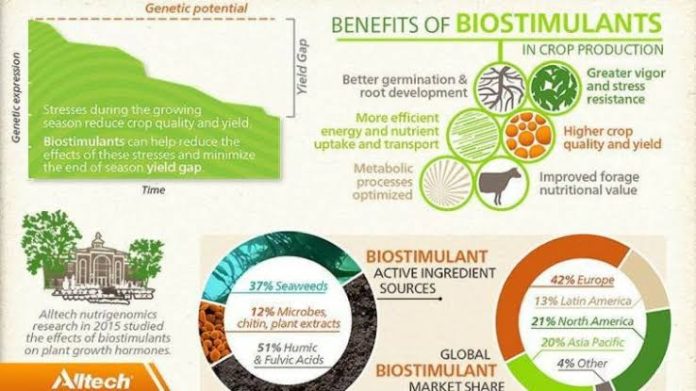By: Dr.Raja Dakhli
In the quest for sustainable agriculture, integrating biostimulants and agro-industrial wastes into soil management is a game-changer. This innovative approach not only boosts soil fertility but also enhances crop performance, transforming organic waste into a valuable resource.
The journey begins with the collection of agro-industrial wastes, which includes plant residues, food processing by-products, and other organic materials. Instead of discarding these materials, they are repurposed for a more sustainable future.
Next, the processing of these wastes into organic fertilizers takes place. Through composting or fermentation, the raw materials are converted into nutrient-rich substances that can replenish the soil. These organic fertilizers become a foundation for the next critical step—formulating biostimulants.
Biostimulants are carefully crafted by combining the organic fertilizers with bioactive compounds such as humic acids, beneficial microorganisms, and plant growth-promoting agents. These ingredients work in harmony to stimulate plant growth and improve soil health.
Once prepared, the biostimulants and organic fertilizers are ready for soil application. They can be mixed directly into the soil or integrated into irrigation systems, ensuring even distribution and maximum absorption by the plants.
The real magic happens in the soil, where the biostimulants enhance microbial activity, improving soil structure and nutrient availability. This process increases the soil’s ability to retain water and nutrients, creating an optimal environment for plant growth.
As a result, farmers see a significant improvement in crop growth and yield. With enhanced resistance to stress factors such as drought and pests, crops thrive, leading to higher productivity and sustainable harvests.
By turning waste into a valuable agricultural input, this process not only boosts crop performance but also promotes environmental sustainability, contributing to a circular economy in farming.

